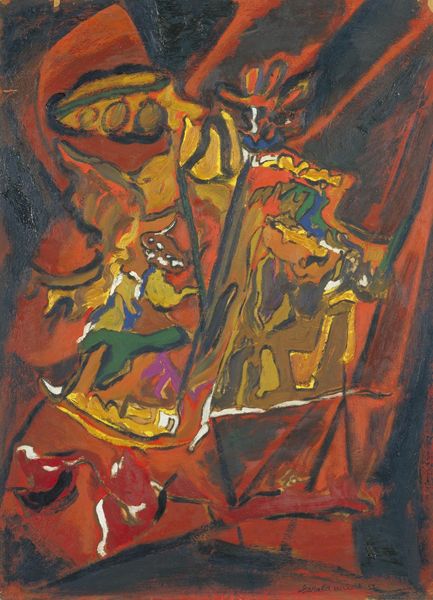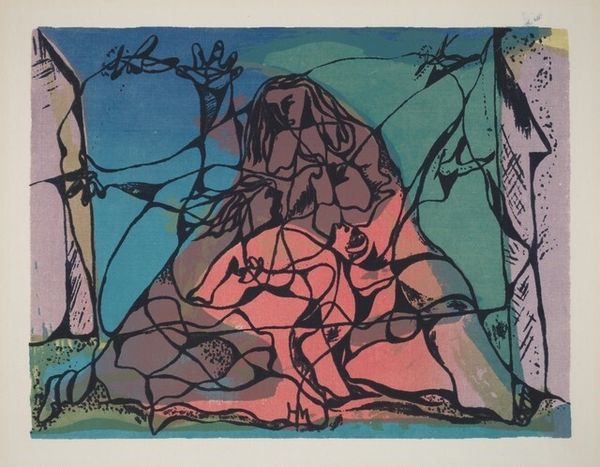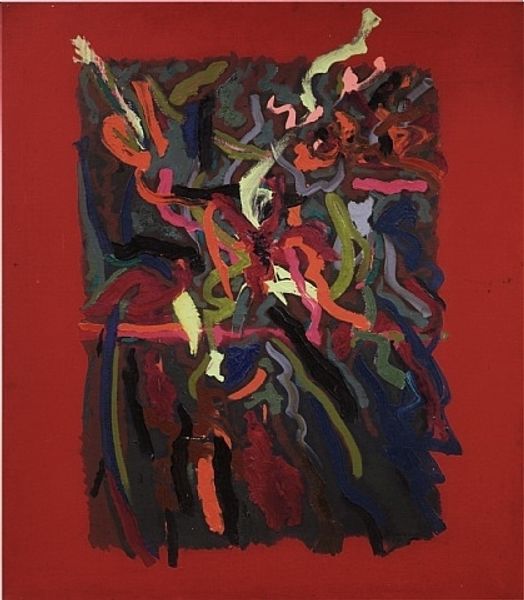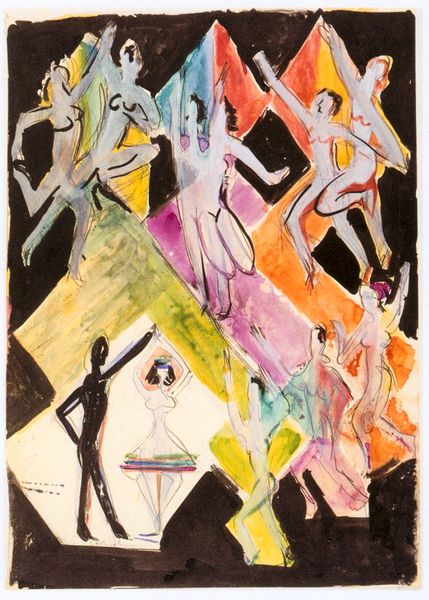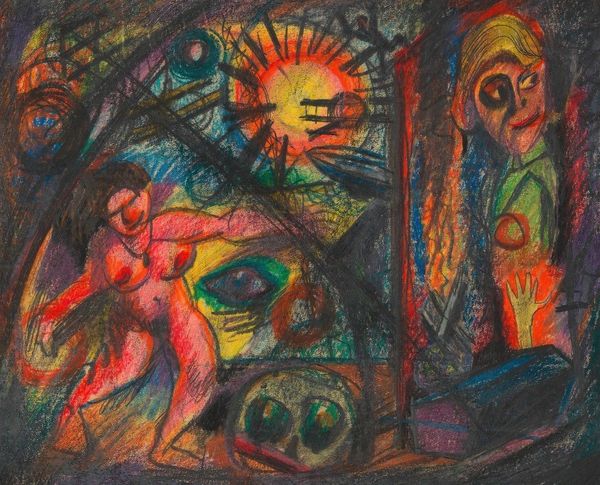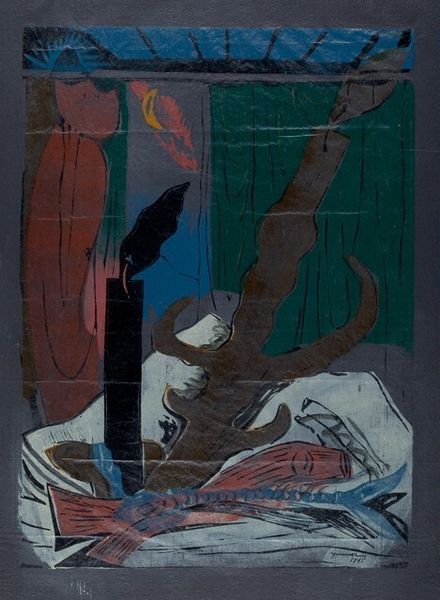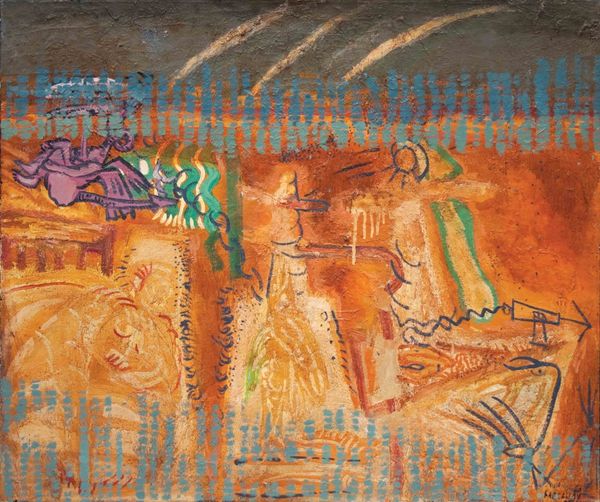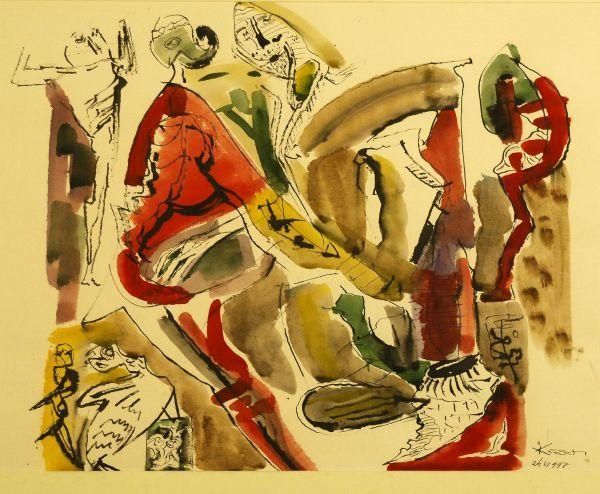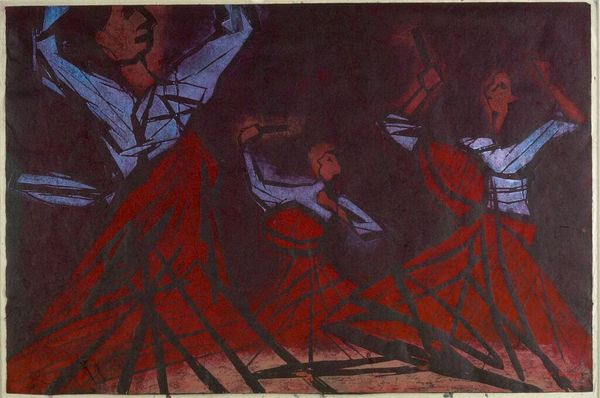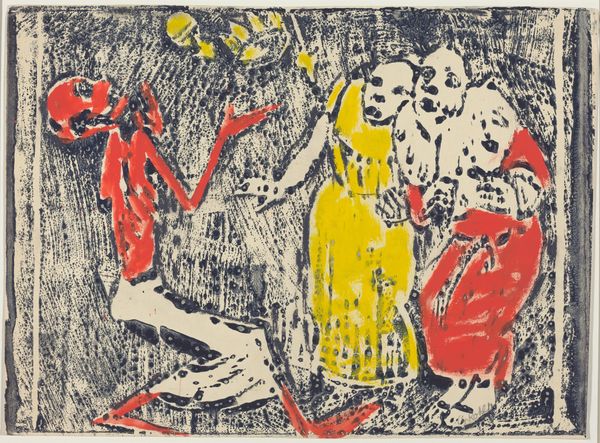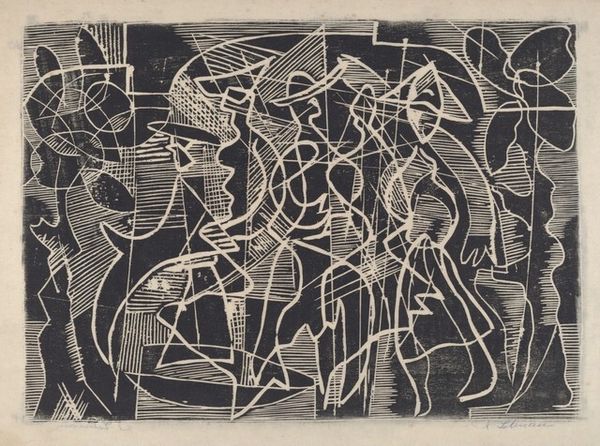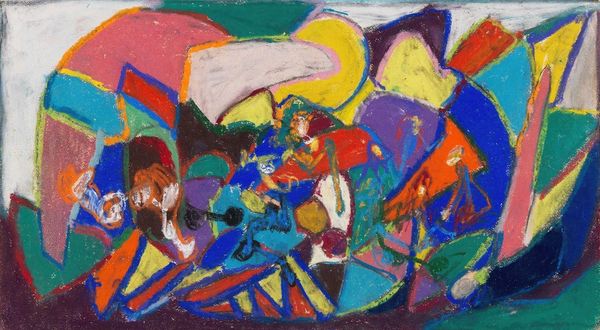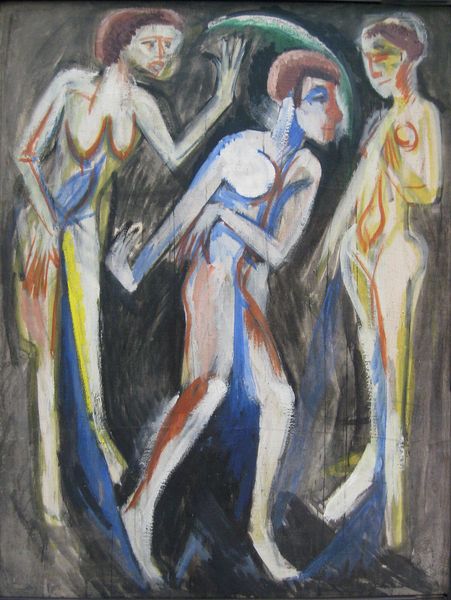
Dimensions: image: 30.16 × 37.78 cm (11 7/8 × 14 7/8 in.) sheet: 33.02 × 43.82 cm (13 × 17 1/4 in.)
Copyright: National Gallery of Art: CC0 1.0
Editor: We're looking at Warrington Colescott's "A Moonlight Swim" from 1952, a color print featuring figures rendered in geometric, abstract shapes. It strikes me as almost chaotic, a swirling of color and form. What's your interpretation of this work? Curator: Well, seeing this work through an activist lens, particularly considering its creation in the post-war era, I'm drawn to the anxieties it might be reflecting about the human body and its place in a rapidly changing world. Colescott seems to be dismantling and reassembling the body through abstraction. Do you notice the fragmented forms and the almost frantic energy? Editor: Yes, the fragmentation is quite striking. It prevents a coherent, singular reading of the figures. Curator: Exactly. Given the social and political context of the 1950s—the Cold War, anxieties surrounding gender roles, and emerging civil rights movements—one might consider these fragmented figures as representative of fragmented identities. Are they liberated by abstraction, or further alienated? What do the bright colours suggest in juxtaposition with the figures and the name of the print? Editor: It's a compelling idea. The colours add a certain energy to the composition, suggesting there's potential, and dynamism even if unsettling. Perhaps this "swim" is not as relaxing or recreational as it seems to be. Curator: Precisely. It asks us to consider whose bodies are represented, and whose stories are told – or obscured – through abstraction. It's not just about aesthetics; it's about power, representation, and the socio-political currents shaping artistic expression. This print almost feels like a critical inquiry into social narratives. Editor: I never would have thought about the figures and context that way! That the work really challenges us about thinking of identity and social change is an eye-opener. Curator: Art holds the power to express complex historical issues that remain relevant today.
Comments
No comments
Be the first to comment and join the conversation on the ultimate creative platform.
